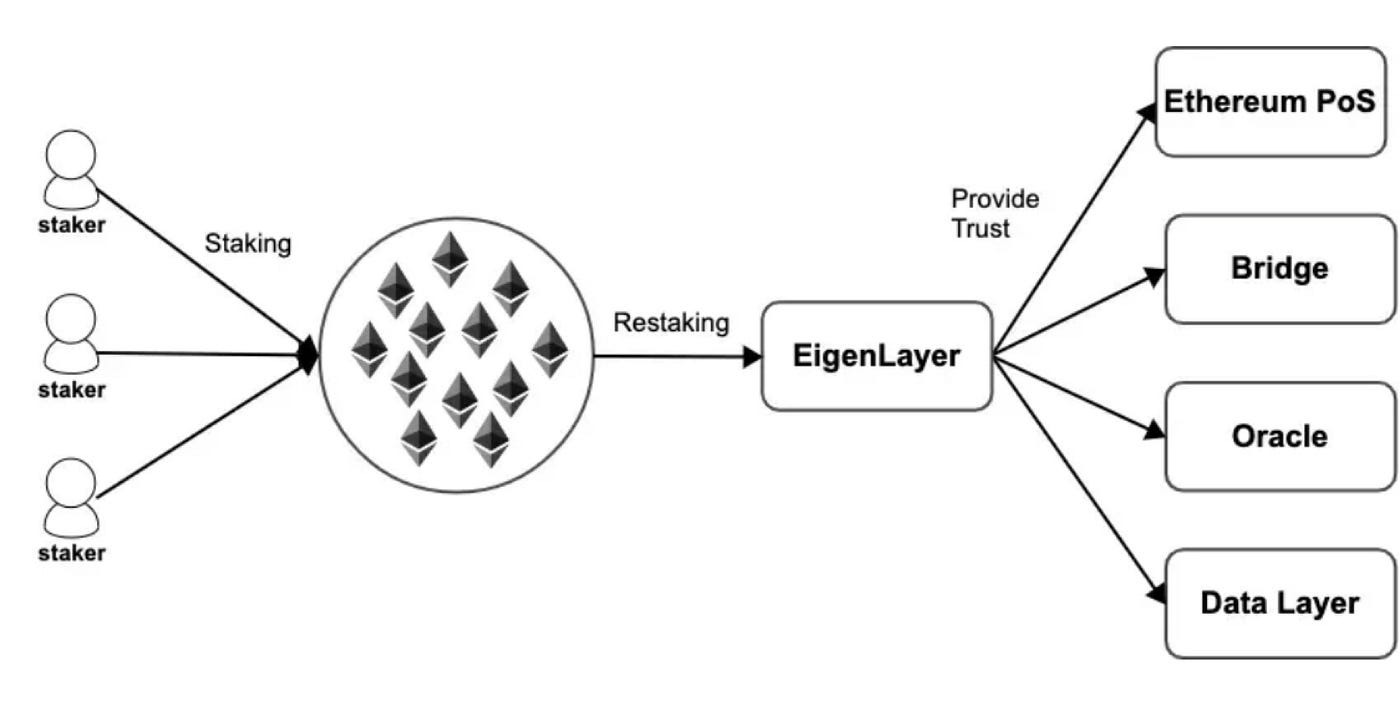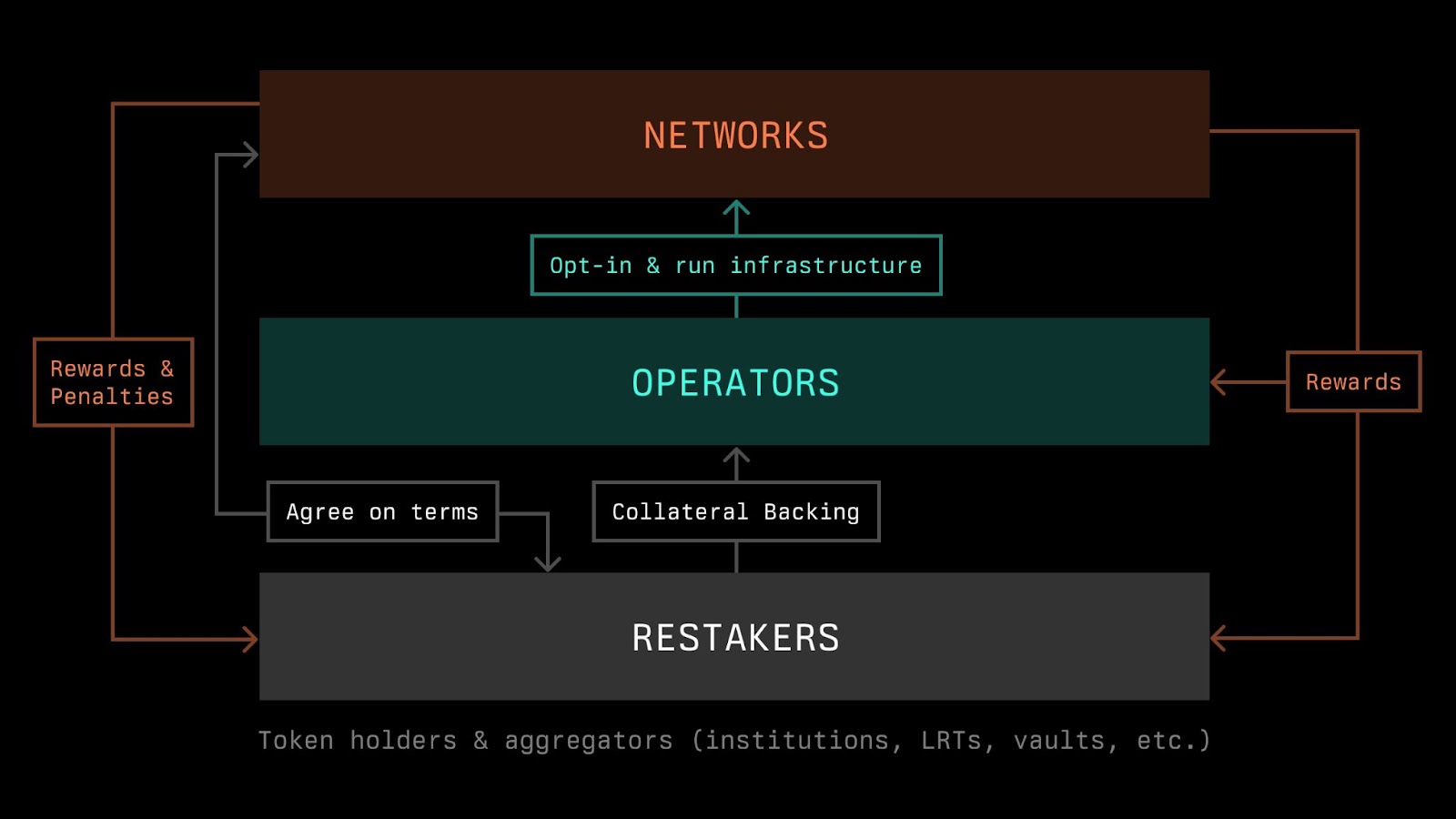
Imagine you’ve staked some crypto on a blockchain to earn rewards. Now, what if you could use that same staked crypto to secure other projects and earn even more on top? That’s the core idea behind crypto restaking, and it’s got everyone in decentralized finance (DeFi) talking.
In this article, we’ll explain what restaking is, why it’s being hyped as the next big thing, how it differs from regular staking, what problems it solves, the key risks involved, and how platforms like EigenLayer implement it – all in plain, relatable language.
What is Restaking and How Does It Work?
Restaking takes staking a step further. In simple terms, restaking means using crypto you’ve already staked on one blockchain to help secure other blockchain projects at the same time. In effect, it lets one pile of staked tokens do multiple jobs. For example, if you put down a deposit to secure one job, restaking is like using that same deposit to also secure a second job for extra pay – but if you mess up on either job, you risk losing that deposit (this is the slashing penalty).


In practice, platforms like EigenLayer on Ethereum enable restaking. You can deposit the ETH you’ve staked in Ethereum into EigenLayer’s smart contract and opt in to secure other protocols that are built on top of it. Your staked ETH then acts as collateral to validate those other services (like oracle networks or side-chains), earning you additional rewards from those projects on top of your normal Ethereum staking rewards. The flip side is that if any of those services catches your validator misbehaving, your ETH can be slashed as a penalty. In short, you’re doing more with the same stake – gaining extra yield but taking on extra responsibility.
Why is Restaking a Big Deal in DeFi?
Restaking is being touted as a game-changer in DeFi because it addresses some key challenges:
- Stronger Security for New Projects: Smaller blockchain apps often struggle to get enough validators. Restaking lets them borrow security from bigger networks like Ethereum instead of building it all from scratch. For example, 100 mini protocols with 1B USDT staked each could share a common 100B USDT stake, so an attacker now needs 100B USDT to attack any one of them.
- More Yield & Capital Efficiency: Restaking lets you get more out of the same investment. You still earn your normal staking rewards, plus extra incentives from the other protocols you secure. It’s essentially like getting two paychecks from one job. No wonder billions of dollars have already poured into restaking platforms as people chase these higher yields.
EigenLayer
The best-known implementation of restaking is EigenLayer on Ethereum. EigenLayer launched in 2023 and lets Ethereum validators restake their ETH to secure new add-on protocols built on top of it. Essentially, EigenLayer serves as a marketplace for security: new projects can tap into the pool of Ethereum’s staked ETH via EigenLayer instead of needing their own separate validators. The platform quickly drew enormous interest – at one point nearly 20 billion USDT worth of ETH was signed up for restaking on EigenLayer, even though some features (like slashing penalties) were initially not fully active.


EigenLayer remains the dominant restaking platform, but now there are others. For example, Symbiotic is a new Ethereum-based restaking project that allows many types of tokens (not just ETH) to be restaked, and it quickly attracted hundreds of millions of dollars in value. And outside of Ethereum, blockchains like Solana are planning to let users restake their native coins (SOL, in Solana’s case) to secure other apps on their network. In short, the restaking concept – sharing and repurposing stake – is catching on across the crypto world.


Risks and Challenges
Restaking isn’t all upside – it comes with significant risks:
- Slashing Contagion: With restaking, you add more ways your stake could be slashed. If any one of the multiple protocols you secure has a failure or attack, it could trigger slashing that affects your funds. In a worst-case scenario, a problem in one project could spill over and deplete a whole shared staking pool, undermining security for all. Some have even dubbed restaking a potential “ticking time bomb” if not carefully managed.
- Over-Leveraging: Stacking too many layers of staking can pile risk on risk. For example, you might stake a coin, then restake the staked token again elsewhere, and so on. This can boost yields but also creates a fragile chain. If one link breaks (say a token loses value or a protocol fails), it can cause a cascade of losses.


- Smart Contract Vulnerabilities: Restaking relies heavily on smart contracts. Bugs or exploits in these contracts can lead to significant losses, as seen in various DeFi incidents.
- Centralization Concerns: As restaking platforms grow, there’s a risk that a few large validators could dominate the network, undermining decentralization.
Despite these risks, supporters believe proper safeguards can make restaking sustainable. EigenLayer, for instance, is working on an “attributable security” insurance model to limit contagion. As the tech matures, better risk management tools may emerge. Many in the community remain optimistic that restaking’s benefits can be realized while managing these risks – making it an innovation to watch in the coming years.
Future Outlook of Restaking
Restaking is poised to play a significant role in the evolution of DeFi:
- Enhanced Capital Efficiency: By allowing the same assets to secure multiple networks, restaking maximizes the utility of staked tokens.
- Support for Emerging Protocols: New projects can leverage the security of established networks through restaking, reducing the barrier to entry and fostering innovation.
- Potential for Increased Yields: As more protocols offer rewards for security, restakers can benefit from diversified income streams.
However, the ecosystem must address the associated risks to ensure sustainable growth. Ongoing developments in smart contract security, decentralized governance, and risk management will be crucial.
Final Thoughts
Restaking is a powerful tool in the evolving DeFi landscape, offering new ways to earn from assets you’ve already staked. But higher rewards come with higher risks—especially when your collateral is stretched across multiple protocols.
This article is for educational purposes only and does not constitute financial advice. Follow our blog for more insights. For safe, simple trading of major tokens, check out Millionero’s spot and perpetual markets. Stay smart. Stay secure. Trade on Millionero.

